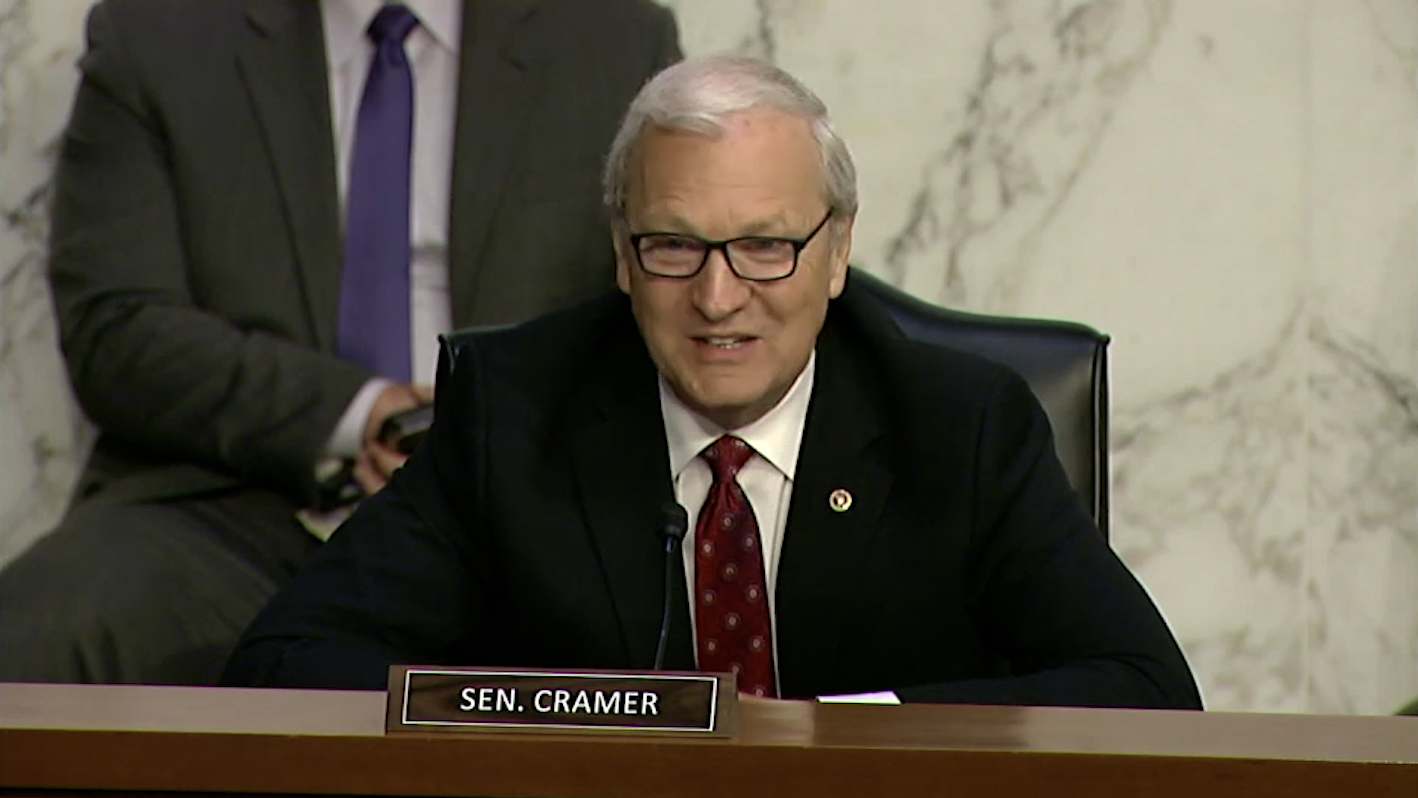***Click here for video. Click here for audio.***
One of the things I have appreciated most about serving on the Environment and Public Works Committee is the bipartisan consensus we strive to achieve and often do. We often do, it’s not very sexy, but we often strive for and achieve consensus.
On a personal note, I’ve especially enjoyed working with you on legislation to support things like clean, nuclear energy and refining our PPP forgiveness process to better serve both borrowers and lenders.
I wanted to serve as the Ranking Member on this subcommittee to further the cooperation that has historically driven infrastructure policy really over the years and the decades.
It is my hope we can continue the trend by crafting a reauthorization bill that meets the priorities of North Dakotans and Marylanders alike.
Despite geographic and political differences, all our constituents understand the importance of roads, bridges and waterways and the role they play in fostering economic development and interstate commerce.
No doubt, many of North Dakota’s products make it into Annapolis’ restaurants or they are shipped out of the Port of Baltimore. That benefits both our states and everyone in between. My point being, if we keep the main thing the main thing, I believe we have a route to success in this reauthorization.
That brings us to our hearing today: Equity in Transportation Infrastructure. Mr. Chairman, one of the aspects I appreciate most about EPW is the statutes under our jurisdiction reinforce federalism.
Highway policies and projects are coordinated between the state and federal government rather than dictated from the federal government to the states.
In fact, Mr. Chairman, I appreciated your comments during our last hearing on the solvency of the highway trust fund, when you had an exchange with a witness regarding how a VMT would fit within a federalist model. It was a great point on your part, and it highlights how we are all very cognizant of the state’s role in the equation.
Typically, infrastructure projects start from the grassroots and work their way up to the state and then federal level. That is why this committee, along with AASHTO and state DOT officials – which I am glad to see we have two here today – have consistently supported distributing federal dollars via formula so every state can be responsive to both the interstate commerce needs within their borders and community connectivity issues.
My point being, there are multiple examples of poor planning decisions that have led to adverse consequences for specific communities.
None of us deny that, and I think we all agree they should be rectified. I believe it should be done at the local and state level where decision-makers are closest to the people and able to make a balanced decision. If a new route, expansion, or removal is necessary, that should be done through the state planning process with the formula dollars allotted to them – not a new discretionary grant that pulls from the limited pool of funding within the Highway Trust Fund.
With that being said Mr. Chairman, I have always advocated for going big in this infrastructure package. Last Congress, we all supported the passage of the largest highway bill in history and I have no problem breaking that record again this time around.
However, the current proposal to deal with the issue at hand - “The Reconnecting Communities Act,” introduced by Chairman Carper - would take $15 billion out of the Highway Trust Fund to establish a new discretionary grant. I don’t object to $15 billion being added to an infrastructure package, but how it’s dispersed is key.
As you all know, the current formula versus discretionary split is roughly 90 percent formula to 10 percent discretionary. That is the policy today and retaining it is one of the top requests from AASHTO and many members of this committee, including me.
If we were to pass “The Reconnecting Communities Act” while following the current 90-10 distribution, it would require $135 billion be added to the formula side of the ledger.
Similarly, rather than creating a new discretionary grant, if we were to distribute the proposed $15 billion via traditional formula, we would not be picking winners and losers among states. Rather this would allow each of them the flexibility to be responsive to their communities.
If we went this route, it equates to roughly $95 million to North Dakota and millions - if not billions in the case of California - more for every other state in the union.
It goes without saying, but federal highways exist for interstate commerce. Planning decisions to reroute or remove portions of the system should not be made lightly and should take into account every interested party and the potential repercussions or even unintended consequences of those actions.
Again, I would reiterate, the state is best equipped to manage these requests, not a federal bureaucrat parsing through grant applications determining which applicant meets the political objectives of whoever is in charge.
Lastly, the most prominent examples I have seen are in urban settings as you describe. But if you put the issue of equity in a rural context, those communities are not struggling with obtrusive infrastructure that gets in the way, they’re dealing with a lack of infrastructure connectivity.
HR2 and the Reconnecting Communities Act both limit new capacity or new miles being added to the system, effectively shutting out rural and tribal communities who need new access, not less.
Thank you again Mr. Chairman for holding this hearing, and I look forward to discussing these issues and listening to the witnesses before us today.
